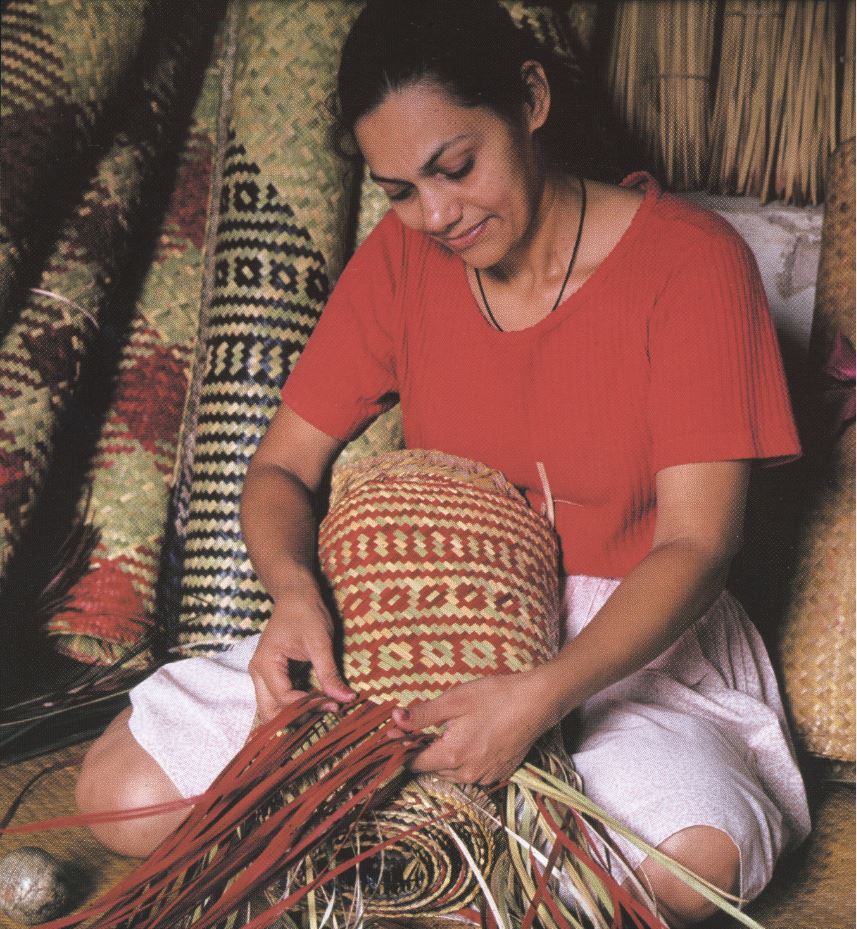Description
El Departamento de Santa Barbara en el noroccidente de Honduras es famosa por la calidad y variedad de productos elaborados con fibras vegetales y de uso cotidiano. Se destaca la producción de sombreros, carteras, canastas, petates, cunas, recipientes de cocina, manteles, hamacas, bolas de cáñamo. Las mujeres utilizan la palma real y el junco (considerado de mejor calidad) que cortan, secan y tiñen y es conocido localmente como guano, coyolillo o como tule (del náhuatl tullin, tillin o tollin) que es el nombre genérico de varias plantas de tallo alto.
La técnica de elaboración inicia con el secado al sol del cogollo de la palma hasta que blanquea, después se desvena las pencas e inicia el proceso de trenzado, mismas que son tejidas entre si para dar la forma al sombrero. También se han introducido otras técnicas innovadoras en el tejido como el enrollado a partir de una estructura anular, lo que les permitió innovar en diseños. El color forma parte de la innovación y algunas de las fibras son teñidas para crear diseños geométricos utilizando tintes naturales o con añilinas. Uno de los productos de mayor tradición en el área mesoamericana son los petates (del náhuatl petatl) elaborados con tule, mismo que todavía es utilizado en las comunidades rurales y particularmente entre los lencas. El petate sirve como superficie para dormir, como alfombra y también puede ser mortaja. Las mujeres suelen trabajar como grupo familiar y se organizan en cooperativas regionales. Una de estas organizaciones es la de Petateras Lencas de la comunidad de El Níspero.
Otra de las fibras vegetales utilizadas es la jarcia, el cáñamo y el henequén o maguey de las que se elaboran hamacas, redes o matates de carga, cinchas y alforjas. La técnica de manejo de la materia prima es desarrollada por hombres y mujeres de la comunidad.
english
Vegetable fibre handicrafts
The Department of Santa Barbara in the northwest of Honduras is famous for the quality and variety of products made from vegetable fibres. The production of hats, handbags, baskets, “petates”, cradles, kitchen containers, tablecloths, hammocks and hemp balls is outstanding. The women use the royal palm and the reed (considered of better quality) which they cut, dry and dye and which is known locally as “guano”, “coyolillo” or as “tule” (from the Nahuatl tullin, tillin or tollin) which is the generic name of several tall-stemmed plants.
The manufacturing technique begins with the drying of the palm heart in the sun until it whitens, then the stalks are deveined and the braiding process begins, which are woven together to form the shape of the hat. Other innovative weaving techniques have also been introduced, such as weaving from a ring structure, which has allowed them to innovate in designs. Colour is part of the innovation and some of the fibres are dyed to create geometric designs using natural dyes or aniline dyes.
One of the most traditional products in the Mesoamerican area are the “petates” (from the Nahuatl petatl) made from “tule”, which is still used in rural communities and particularly among the Lenca people. The “petate” serves as a sleeping surface, as a rug and can also be a shroud. Women usually work as a family group and organise themselves into regional cooperatives. One such organisation is the Lenca “Petateras” from the community of El Níspero.
Other vegetable fibres used are “jarcia”, hemp and “henequen” or maguey, which are used to make hammocks, nets or “matates” for carrying loads, belts and saddlebags. The technique of handling the raw material is developed by men and women of the Lenca community.



Reviews
There are no reviews yet.